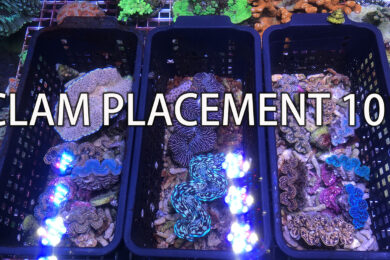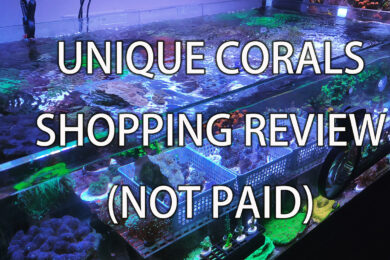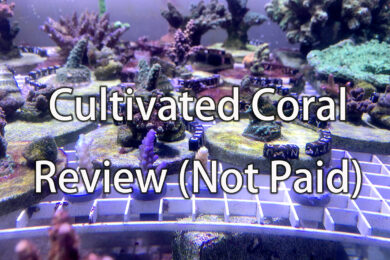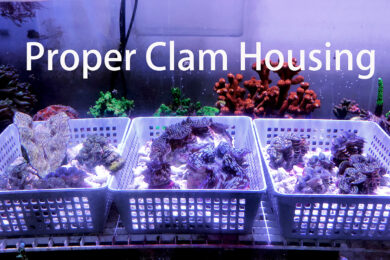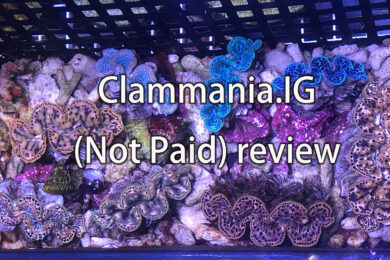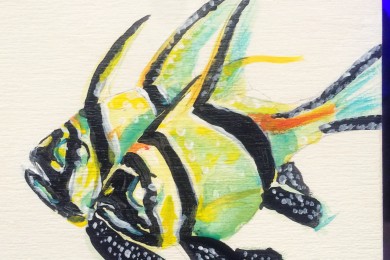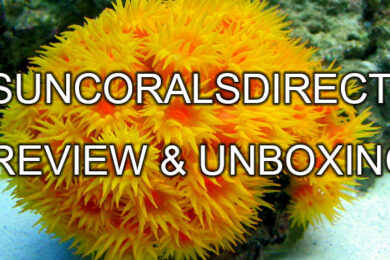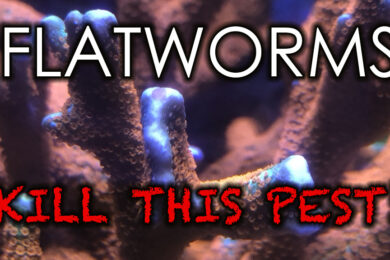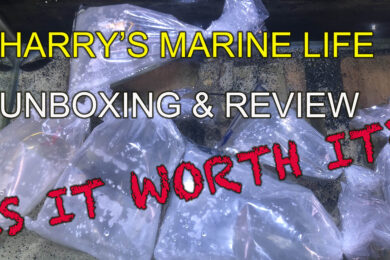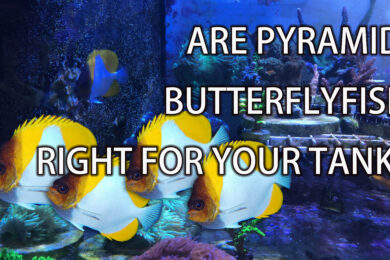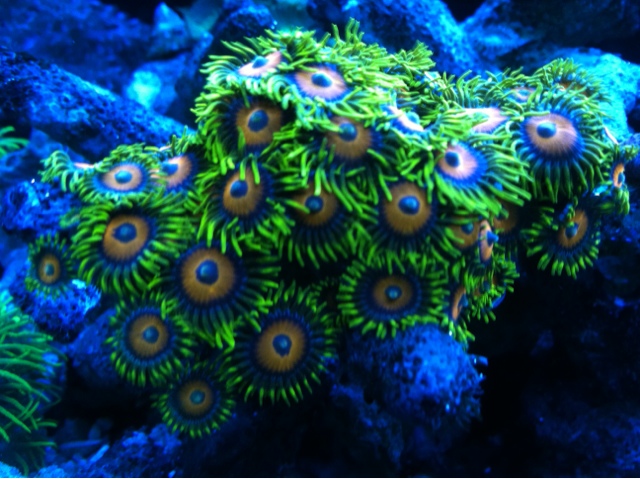Zoanthids are one of the most commonly found “corals” in the home aquarium. Not only they are brightly colored and have a compact size, they are normally really easy to keep, grows and spreads in a steadily fast pace. They are ideal for new marine hobbyists who want to try their hands in invertebrates.
The reason why I put “” around the word coral is because technically Zoanthids are more anemone than coral. And just like anemone, they can be poisonous so handle with care (Personally I have brushed my hand and handled both anemone and zoanthids and have never engaged any harm from them, but please use caution as some people may develop allergic reaction to certain aquatic lives.).
Zoanthids do come in many many different shades and colors. The price can also vary greatly depends on their color and rarity. Generally a colony about 2 square inches would cost between $15-30. But in some occassions you will find stores or breeders selling rare speciments at “per polyp” price. The most rediculous price I have ever heard was $45 per polyp (and it wasn’t even that beautiful). Personally I suggest you use your own judgement in how much you want to pay for them. If they are increadibly expensive, it might pay to just wait a while as these critters grow really fast and once the “rare” types becomes more popular the price will eventually come down.
Caring:
Light: They are the most forgiving of all corals I have ever kept when it comes to light. I have the exact same species of zoanthids placed both 3 inches from the water surface with a 250W metal halide blasting over it and another colony at the very bottom and the edge of the tank. The lighting doesn’t seem to make them grow any faster, however they do seem to open more generously with lower lighting. In addition, most of them will show and “pop” with the best coloration if you use more “blue” light such as actinic or 420nm bulbs.
flow: I have seen them thrive and extend their tentacles right next to a powerhead, I have also seen them open up and happy at a very still location of the tank. Again, use your judgement, but with either extreme, make sure you do it slowly so they can adjust to them.
Water quality: Obviously in order to keep anything else in your tank happy, the water needs to be free of nitrate and phosphate, But you might want the water to be “slightly” dirty as the zoanthids do absorb a good deal of nutrients from the water. I can tell that my zoanthids had really good growth (ironically) when they are placed in a quarantene tank without skimmer.
Disease and damages: Zoanthids do have a number of natural enemies in the wild ranging from fish to other invertebrates. If you spot a fish nipping at Zoanthids, you are pretty much left with the option of which one you want to keep more in your tank. If you find some small critters (snail, star, crab) nipping on them, you can carefully monitor and remove them as it happens. One good rule of thumb is to do a “Lugol’s dip” when you receive them. To do so, get a bottle of Kemps “Lugol’s solution”, a super concentrated bottle of iodine. Follow the instruction for a coral dip indicated by the product to kill off any hitchhiking parasites that comes with it.

